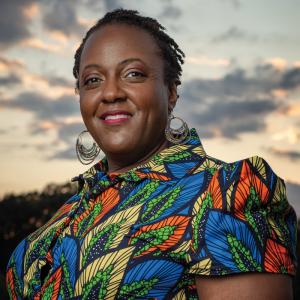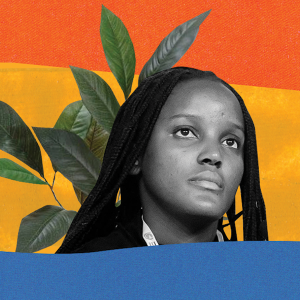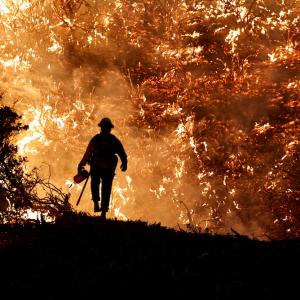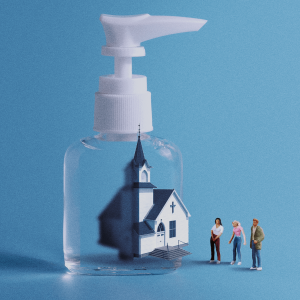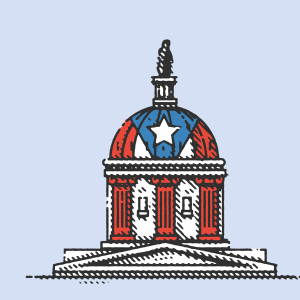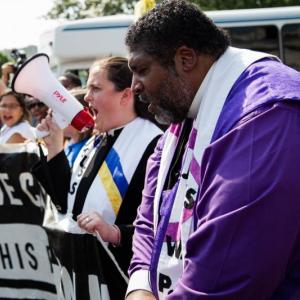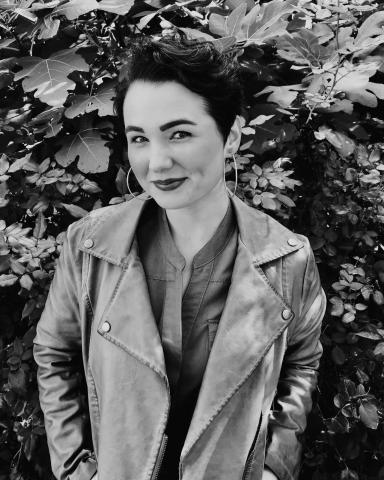
Christina Colón is former associate editor of Sojourners magazine. She rejoined the staff of Sojourners after previously serving as an editorial fellow and as assistant editor of sojo.net.
A writer and editor, Christina believes in telling stories that are rooted in truth and imbued with hope. She embarked on her first editorial role at the age of 9 when she co-founded the short-lived, investigative neighborhood newspaper, The Pink Street Times. Since then, Christina has served as an editor at Global Press Journal, where she coached women reporters in more than 40 communities around the world, and as the communications manager of Washington Nonprofits. She has published work with The National Press Club Journalism Institute, the Faith & Money Network, and Sojourners. In 2018, she was selected to be a member of the Solutions Journalism Network’s #MeToo reporting cohort through which she wrote about sexual harassment in housing, an issue that has gone chronically underreported in the United States.
Christina holds a degree in sociology and anthropology from Centre College and a certificate in editing from The Poynter Institute and the ACES. She is a certified trainer in workplace integrity through the Freedom Forum Institute and a member of the Solution Journalism Network's Journalist in the Classroom program, which connects solutions-oriented journalists with university students and educators. When not pedaling away on her DeskCycle, Christina enjoys long walks and tending to her growing flock of succulents. You can follow her on Twitter @CJaneColon.
Posts By This Author
Black Americans (and Faith Communities) Are Key to the Climate Movement
WHEN I WAS 8 years old, I fried an egg on the street. Well, I tried to fry an egg on the street. It had been a particularly brutal summer in Florida. On the days when the playground slides were too hot to go down, my mom would say, “It’s hot enough to fry an egg on the sidewalk!” I kept my eyes glued to that splattered yolk for two hours until a car tire brought the grand breakfast experiment to an end. Frying eggs on sidewalks was how I learned to conceptualize extreme heat.
When it comes to describing climate change urgency in Black communities, Heather McTeer Toney taps into something simple: streetlights. In Before the Streetlights Come On: Black America’s Urgent Call for Climate Solutions, she writes that when she was growing up, kids could play all day outdoors, but they had to be home “before the streetlights came on.” As twilight settled in and streetlights started to flicker, kids would call out, “Hurry up, we ain’t got all day!”
“Right now, that same call to action is carried in the waves of massive hurricanes, on the winds of devastating firestorms, and in the uncharacteristic heat of winter,” McTeer Toney writes. Using a familiar metaphor, she issues a call to action of her own.
Climate change and environmental justice is not foreign to McTeer Toney or the communities she writes about. At age 27, she was the first female and youngest person to serve as mayor of Greenville, Miss., where she was born and raised. As mayor, she brought the city out of debt and established sustainable infrastructure repair. For three years, she led the Environmental Protection Agency for the southeastern United States. While at the global nonprofit Environmental Defense Fund, she addressed environmental policy and community organizing within and beyond the U.S. This spring, McTeer Toney became executive director of Beyond Petrochemicals, a campaign to stop the rapid expansion of petrochemical and plastic pollution, particularly in the Ohio River valley and along the Gulf Coast.
McTeer Toney and her family attend Oxford University United Methodist Church in Oxford, Miss. I spoke with her by phone about her work, her book, and the hope her faith demands. — Christina Colón
It's Time to Talk About the Climate Emergency (Not That One Photo)
THE IMAGE THAT first brought Ugandan climate activist Vanessa Nakate to many people’s attention is one that doesn’t even include her.
In January 2020, Nakate was invited to join five other young activists in a climate demonstration during the World Economic Forum annual meeting in Davos, Switzerland. An Associated Press photographer snapped a photo of Nakate standing with European climate activists Luisa Neubauer, Greta Thunberg, Isabelle Axelsson, and Loukina Tille. But when the AP published the photo that afternoon, Nakate wasn’t in it.
“Even now, well over a year after being cropped out of that photograph, it’s hard for me to talk about what happened,” wrote Nakate in her 2021 book A Bigger Picture: My Fight to Bring a New African Voice to the Climate Crisis. “By cutting me out of the photo they’d originally sent to global media organizations, the AP had denied an African activist a chance to be seen and, possibly, her message to be acknowledged.”
While the AP did some “soul-searching” following the incident, Nakate used the moment to ignite an overdue conversation about the whiteness that has long plagued the global environmental justice movement. “Being cropped out of the photo changed me,” she wrote. “I decided, from my perspective as a young African woman, that I would dedicate as much of my time as possible to addressing the many interlocking facets of the climate crisis, environmental justice, and gender discrimination — and to do so without apology or fear of erasure.”
Nakate founded the Rise Up Movement to amplify the voices of climate activists from Africa and launched a fundraising campaign for the Vash Green Schools Project to bring solar panels and cookstoves to schools across Uganda. At 25, she’s busy. And faced with a global climate emergency, it makes sense. “I don’t often get asked what recharges me,” Nakate told me when we spoke in early August. “But for me, it’s my relationship with the Holy Spirit.”
Raised in an Anglican family, Nakate became a born-again Christian as a teenager. “Activism can be very hard and prayer and attending services (or, in Covid times, watching online) have been extremely important sources of love, grace, and support,” she wrote in the acknowledgments of A Bigger Picture.
“If I feel distraught or disturbed by anything, I know the Holy Spirit will remind me of the peace that surpasses all human understanding,” she later told me. I spoke with Nakate via Zoom about her Christian faith, the role social media plays in her activism, and why we can’t eradicate poverty without addressing the climate crisis. — Christina Colón
It’s Hard to Write Headlines in a Heat Wave
One hundred- and eight-degrees Fahrenheit. According to the University of Washington, that June day in 2021 was the hottest day ever recorded in the city of Seattle. And my fourth-floor apartment did not have air conditioning.
The Stories We Told This Year
“We are hungry for renewal,” Valarie Kaur wrote in the January 2021 issue of Sojourners. “Sound government is necessary but not sufficient to heal and transition America. Only we the people can bring our communities together, tend to our wounds, and do the labor of reckoning, reimagining, and remaking our nation, block by block, heart to heart.”
What Is Church Now?
WHEN MUCH OF THE UNITED STATES was ordered into a lockdown last March, pastors followed suit, shutting the doors of their sanctuaries, parish halls, and classrooms. For many pastors, choosing to close was an easy decision to make in the moment. It was an act of love centered on the health and safety of their congregants.
But what came after was harder. While some churches had been offering online services for years, many did not have the technology in place to make a seamless switch. For weeks, I watched the pastors of my parent’s church in Virginia pass a set of Apple AirPods back and forth while a church member propped an iPhone in place. And even those who were able to stream their services struggled with how to ensure certain members of their community were not left out. “We have so many people in our community who are in that 70-and-up range and for whom Sunday morning is the most life-giving part of their week,” Rev. Nick Coates of Red Deer Lake United Church in Calgary, Alberta, said. “And they [didn’t] have the ability to move online with us.”
For others, the moment presented more than a technological challenge, stirring theological questions as to what worship even was without the physical incarnation of the church body. Who would we be after more than a year of doing communion “with apple juice and Ritz crackers?” Pastor Peter Chin of Rainier Avenue Church in Seattle wondered. Now, with mask mandates lifted and vaccination rates on the rise, that moment has arrived. And pastors have returned to their buildings only to be met with more questions than answers and wondering where we go from here.
Will Puerto Rico Become the 51st State?
TERRITORY. COLONY. COMMONWEALTH. “An island surrounded by water, big water.” Boriquén.
In 2017, when Hurricane María hit and Puerto Ricans were left without power for months, people around the world Googled: “What is Puerto Rico?”
A strip of land 100 miles long and 35 miles wide in the Caribbean Sea. Home to nearly 3.2 million people, “proud people,” as my abuela says. It is an island of people in la brega, an expression without a translation that encapsulates “a state of mind,” Alana Casanova-Burgess explains in La Brega, a WYNC podcast series. It’s the feeling of always being in the struggle, the hustle. “It shows us something about our ‘Puerto Ricanness,’ our history, our present,” she says. “And maybe where we’re headed.”
This year, Steven Spielberg will release his screen revival of the hit musical West Side Story. It’s been 60 years since Rita Moreno as Anita sang, “I like to be in America” from a staged New York City rooftop (muddying the waters as to whether Puerto Rico was “America”). As a new Anita emerges, Congress will debate the Puerto Rico Statehood Admission Act, introduced in March. If the act is approved, then a vote will be held in Puerto Rico on whether to become a state.
‘Immoral.’ ‘Unnecessary.’ ‘Cruel.’ First Federal Execution in 17 Years Sparks Outcry
On July 14 the federal government executed Daniel Lewis Lee — the first federal execution in 17 years.
Queer, Christian, and Beloved
Through their digital platforms, Beloved Arise is working to counter that message, telling youth from New York to Hawaii that they are loved “with no caveats, limitations, or exceptions.”
The Black Church Has Always Resisted Anti-Blackness
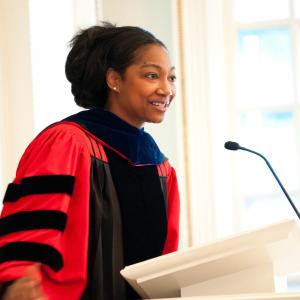
The Reverend Eboni Marshall Turman preaches at High Point University in North Carolina. Photo courtesy of www.marshallturman.com.
On the 155th observance of Juneteenth, a collective of Black church pastors and theologians released a theological statement to “emphatically repudiate the evil beast of white racism, white supremacy, white superiority and its concomitant and abiding anti-Black violence.”
Poor People's Campaign Digital Moral March 'Changes the Narrative'
On Saturday, more than 2 million people gathered virtually to “call for a radical redistribution of political and economic power” as part of the Mass Poor People’s Assembly and Moral March on Washington Digital Justice Gathering.
Digital Poor People's March Calls for Moral Political Agenda
This Saturday, people across the country will come together digitally to demand action from public officials as part of the Mass Poor People’s Assembly & Moral March on Washington.
Protests Prompt Federal Review Into Deaths of Robert Fuller and Malcolm Harsch
On Monday, law enforcement officials in California announced further investigation into the deaths of Robert Fuller and Malcolm Harsch.
Fuller, 24, was found hanged from a tree in a park about a block from Palmdale City Hall last Wednesday. Harsch, 37, was discovered 10 days earlier on May 31, hanged from a tree in Victorville, which lies just 50 miles east of Palmdale.
Nationwide Observances of 'Day of Mourning and Lament' Grieve Two Pandemics
In more than 60 cities across the country, people stopped on June 1 to remember the more than 100,000 people who have died from COVID-19 as part of a National Day of Mourning and Lament.
A 'Momentous and Tragic' Moment as U.S. Surpasses 100,000 COVID-19 Deaths
The United States surpassed 100,000 deaths related to the novel coronavirus on Wednesday.
It’s a staggering number representing nearly a third of the 353,011 COVID-related deaths worldwide. In the U.S., more Americans have died of the virus than in the Iraq, Afghanistan, Vietnam, and Gulf wars combined.
Virginia Pastors Weigh Reopening Churches as State Orders Lift
This Sunday, churches in parts of Virginia will be permitted to open their doors for services as part of phase one of Gov. Ralph Northam’s reopening plan.
It’s a moment many pastors in the state have been eagerly anticipating.
For Seminary Students, Pandemic Brings Change and Questions of Calling
When campus life shuttered in March to slow the spread of the coronavirus, more than 14 million students across the nation were forced to adapt to new routines. Campus lawns speckled with students gave way to uniform rows of faces on video calls. The now coined “Zoom fatigue” replaced “pulling an all-nighter” at the library.
While the pandemic has strained students from all academic disciplines, seminary and divinity students have felt unique pressure as they discern calls to enter positions and spaces of worship that may not resemble what they did before the virus took hold.
Four students shared with Sojourners what their studies look like amid the pandemic and how this moment is shaping their call.
In a Pandemic, We Must All Be Fact-Checkers
In the 18 hours after President Trump publicly mused at a news conference about treating the coronavirus by injecting disinfectants such as bleach and Lysol, 30 calls were made to New York City’s poison control about toxic exposure to household cleaners.
Protestant Pastors Increasingly See Link Between Global Warming, Human Activity
It’s the first time that a majority of Protestant pastors have according to a new survey by LifeWay Research.
Amid Pandemic, the Way We Talk About Death Is Changing
As of April 15, more than 101,000 people worldwide have died of the novel coronavirus. In the U.S., 42 states, the District of Columbia, and Puerto Rico have issued orders for people to stay in their homes to slow the spread. But with at least 1.6 million infected globally, the mortality rate has forced an increasing number of people to confront a topic they tend to otherwise avoid: death.
The Peace Poets are Expanding the Circle
BEFORE THEY ARE hip-hop performers, educators, and poets, the Peace Poets are a family. “It’s been a development of a brotherhood,” Frank Antonio López (aka Frankie 4) says of the group’s formation. López and Abraham Velazquez Jr. (aka A-B-E) met when they were 3 years old. Enmanuel Candelario (aka The Last Emcee) was introduced to the pair in grade school and introduced to Frantz Jerome (aka Ram 3) in high school. Candelario would go on to meet Luke Nephew (aka Lu Aya) at Fordham University in New York.
Much of the Peace Poets’ foundational development occurred in Harlem at Brotherhood/Sister Sol, a leadership and educational organization for black and Latinx youth. It was there, López says, that the Peace Poets were “politicized through art.”
